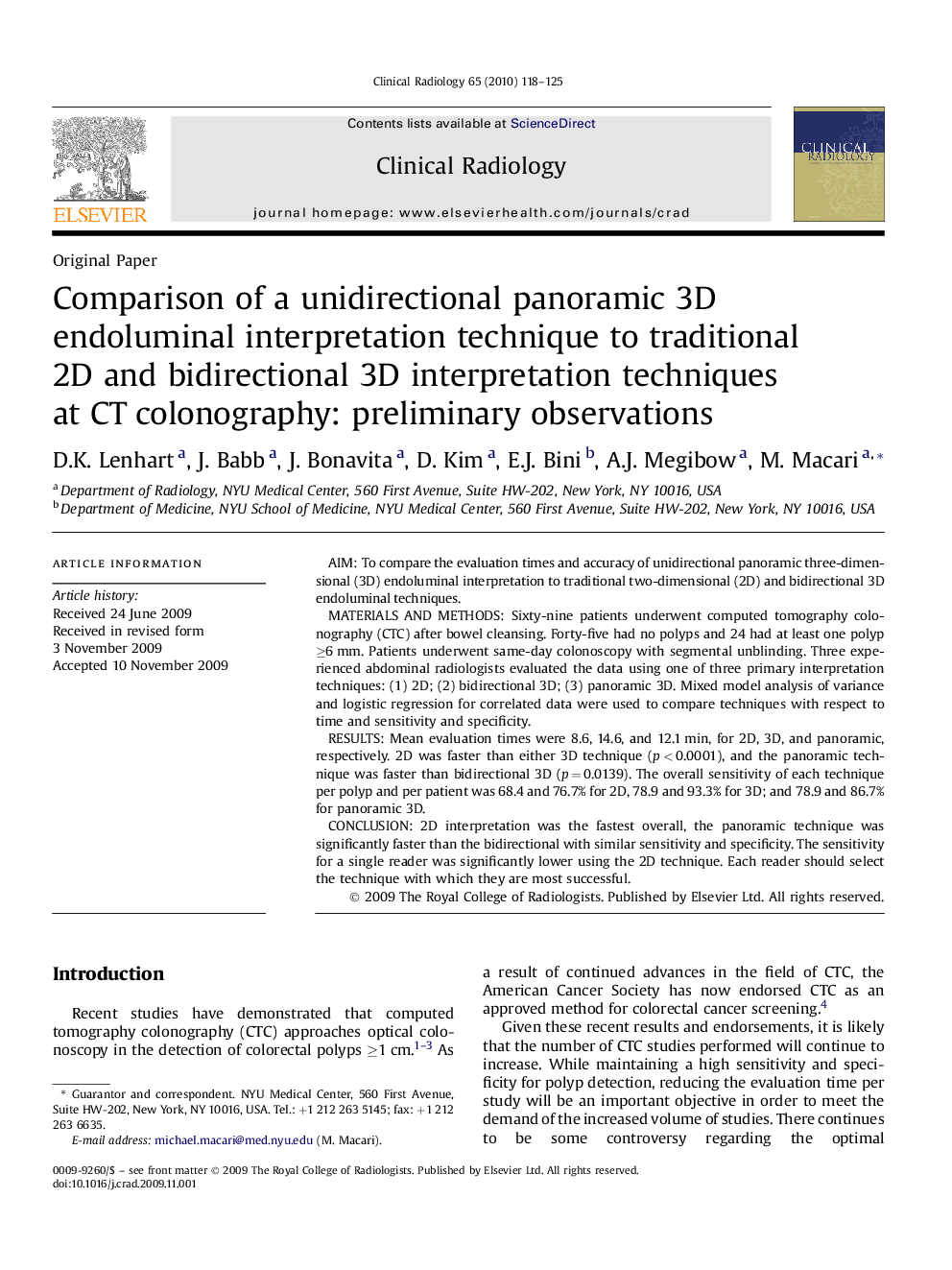| Article ID | Journal | Published Year | Pages | File Type |
|---|---|---|---|---|
| 3983716 | Clinical Radiology | 2010 | 8 Pages |
AimTo compare the evaluation times and accuracy of unidirectional panoramic three-dimensional (3D) endoluminal interpretation to traditional two-dimensional (2D) and bidirectional 3D endoluminal techniques.materials and methodsSixty-nine patients underwent computed tomography colonography (CTC) after bowel cleansing. Forty-five had no polyps and 24 had at least one polyp ≥6 mm. Patients underwent same-day colonoscopy with segmental unblinding. Three experienced abdominal radiologists evaluated the data using one of three primary interpretation techniques: (1) 2D; (2) bidirectional 3D; (3) panoramic 3D. Mixed model analysis of variance and logistic regression for correlated data were used to compare techniques with respect to time and sensitivity and specificity.ResultsMean evaluation times were 8.6, 14.6, and 12.1 min, for 2D, 3D, and panoramic, respectively. 2D was faster than either 3D technique (p < 0.0001), and the panoramic technique was faster than bidirectional 3D (p = 0.0139). The overall sensitivity of each technique per polyp and per patient was 68.4 and 76.7% for 2D, 78.9 and 93.3% for 3D; and 78.9 and 86.7% for panoramic 3D.Conclusion2D interpretation was the fastest overall, the panoramic technique was significantly faster than the bidirectional with similar sensitivity and specificity. The sensitivity for a single reader was significantly lower using the 2D technique. Each reader should select the technique with which they are most successful.
